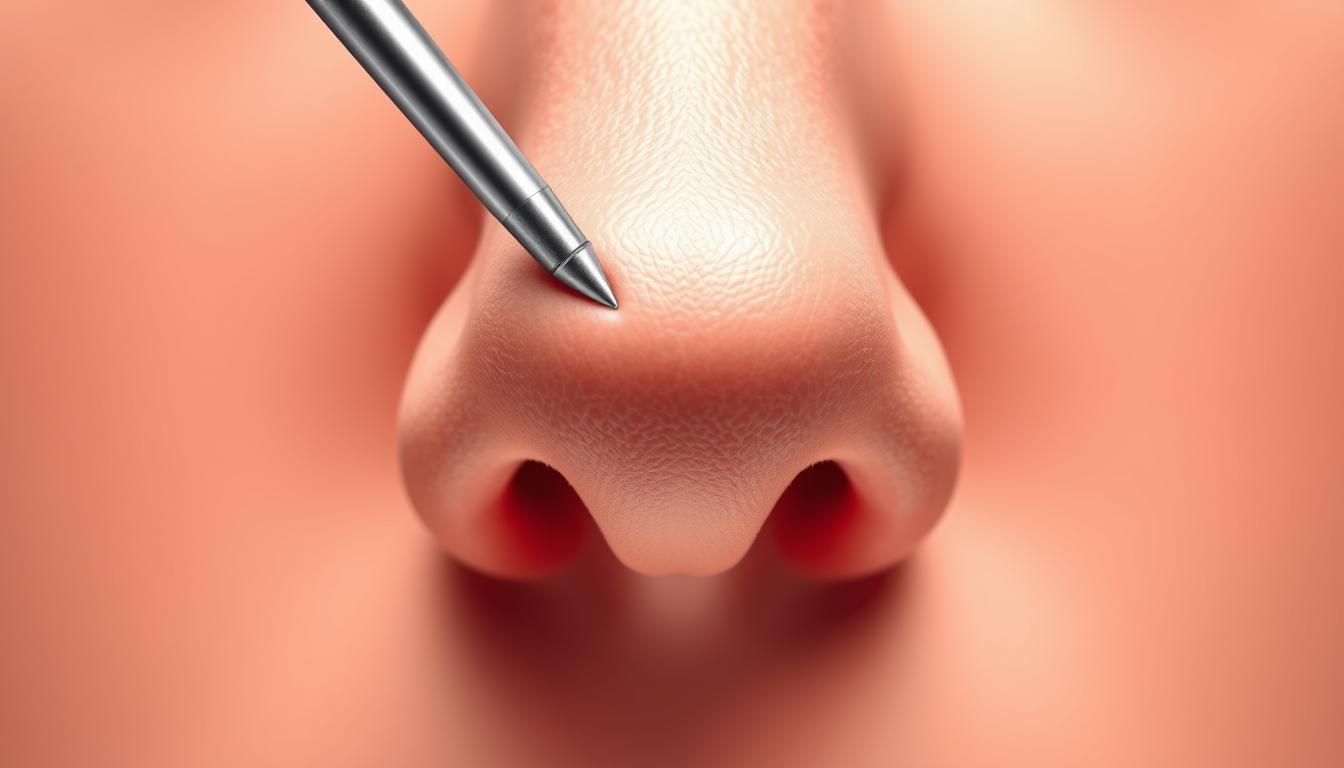A bulbous nasal tip is characterized by its excessively round, bulging, and/or heavy appearance. This distinct nasal shape can significantly impact an individual’s facial appearance.
Bulbous nose tip surgery, also known as tip rhinoplasty, is a specialized procedure designed to refine and reshape the nasal tip, creating better facial harmony.
Understanding what to expect before, during, and after this surgical intervention is crucial for patients considering this procedure to improve their facial features.
Key Takeaways
- Bulbous tip rhinoplasty refines and reshapes an excessively round or bulging nasal tip.
- The procedure aims to create better facial harmony by addressing the disproportionate appearance of a bulbous tip.
- Precise modifications are made to the underlying cartilage structure and sometimes the skin covering the nasal tip.
- A comprehensive guide will explore all aspects of bulbous tip rhinoplasty, from initial consultation through recovery and final results.
- Patients can achieve a more refined and aesthetically pleasing nasal appearance through this surgery.
Understanding Bulbous Nose Tip
Understanding the characteristics of a bulbous nose tip is essential for those considering rhinoplasty. A bulbous nose tip is characterized by its rounded and sometimes enlarged appearance, which can be due to the shape of the cartilage or the thickness of the skin.
Definition and Characteristics
A bulbous nose is defined by its excessive curvature and width, often making the nose appear larger than it actually is. The characteristics include a rounded tip that lacks definition and may be accompanied by thick sebaceous skin, contributing to its bulbous appearance.
How It Affects Facial Appearance
A bulbous nose tip can significantly affect facial features and overall appearance. It can make the face appear wider or heavier, drawing attention away from other attractive features. Facial analysis by skilled surgeons considers how modifying the bulbous tip can enhance overall facial aesthetics while maintaining natural-looking results.
By refining the nose tip, individuals can achieve a more balanced face shape, potentially boosting their confidence in their appearance.
Common Causes of a Bulbous Nasal Tip
Several factors contribute to the development of a bulbous nasal tip, including genetics and cartilage structure. Understanding these causes is essential for determining the most effective treatment approach.
Genetic Factors
Genetic factors play a significant role in the shape and appearance of the nasal tip. Individuals with a family history of bulbous noses are more likely to have a similar nasal tip shape.
Thick Sebaceous Skin
Thick sebaceous skin can contribute to the appearance of a bulbous nasal tip. This type of skin can make the tip appear heavier and less defined.
Cartilage Structure and Position
The cartilage beneath the nasal tip plays a crucial role in its appearance. A bulbous tip often results from convex or poorly defined cartilage, or from cartilages that are positioned too high on the nose.
| Cause | Description | Effect on Nasal Tip |
|---|---|---|
| Genetic Factors | Inherited traits influencing nasal shape | Family history can lead to similar nasal tip appearance |
| Thick Sebaceous Skin | Skin type that is thick and oily | Makes the nasal tip appear heavier and less defined |
| Cartilage Structure and Position | Convex or poorly defined cartilage, or cartilage positioned too high | Results in a bulbous or rounded nasal tip appearance |
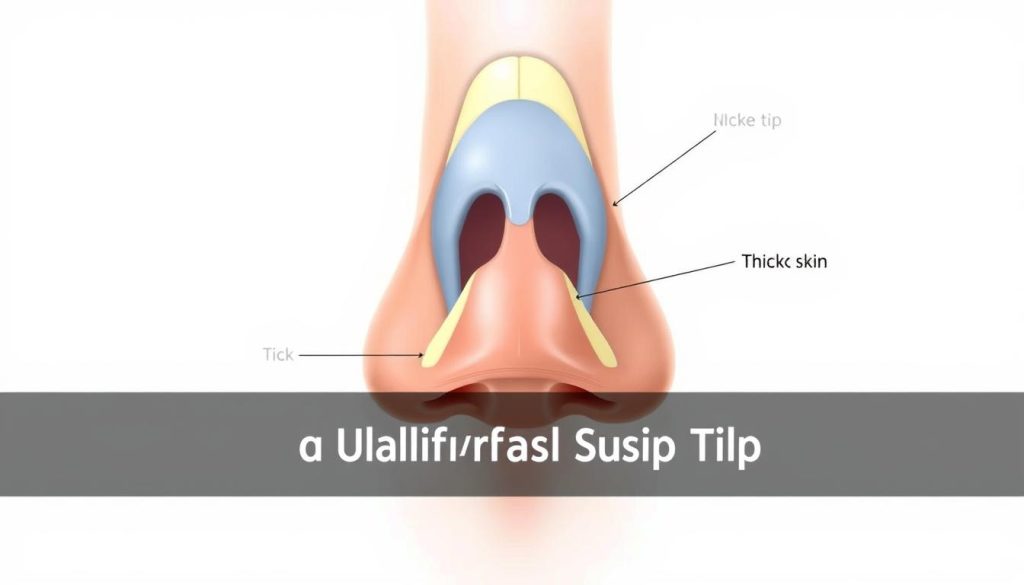
Bulbous Nose Tip Surgery: The Procedure
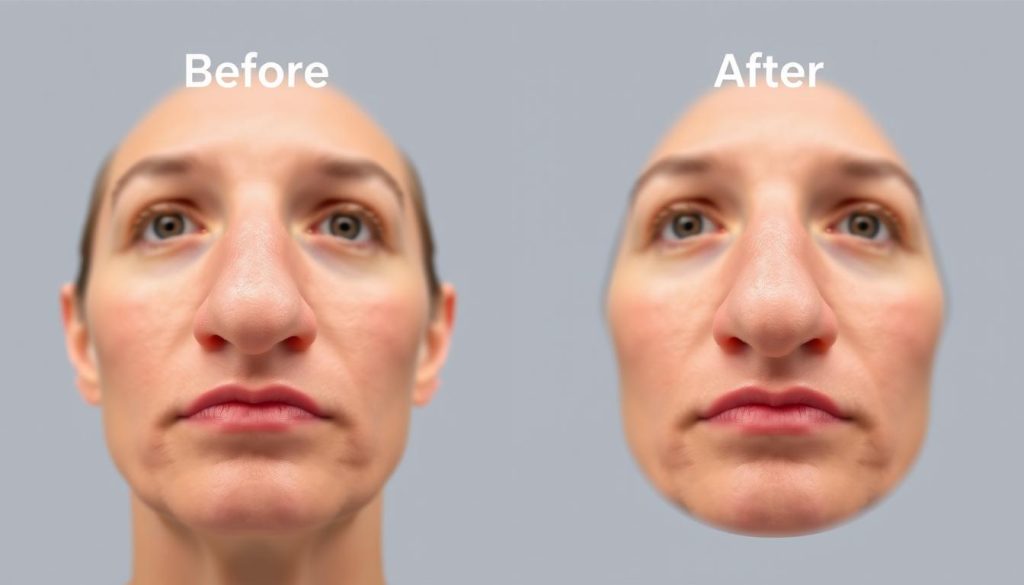
Surgical refinement of a bulbous nasal tip involves advanced rhinoplasty techniques to achieve a more defined and natural-looking nasal tip. Dr. Cangello utilizes state-of-the-art methods, such as an endonasal approach, to refine the nasal tip without compromising the underlying nasal structure.
Open vs. Closed Rhinoplasty Approaches
The choice between open and closed rhinoplasty depends on the complexity of the case and the surgeon’s preference. Closed rhinoplasty, or endonasal rhinoplasty, is a minimally-invasive technique that involves making incisions inside the nostrils, resulting in no visible scarring. This approach is often preferred for its quicker recovery time.
Surgical Techniques for Tip Refinement
Modern tip refinement techniques focus on preserving and restructuring nasal cartilage rather than aggressive removal. Techniques include suture methods to reshape the lower lateral cartilages, cartilage grafting for additional support, and debulking of fibrous fatty tissue for patients with thick sebaceous skin. Advanced techniques like lateral crural strut grafts and septal extension grafts can provide additional projection and definition.
The Consultation Process
A thorough consultation is essential for understanding the specifics of bulbous tip rhinoplasty procedures. This initial meeting between the patient and surgeon sets the foundation for a successful surgical outcome.
What to Expect During Your Initial Visit
During the initial consultation, patients can expect a comprehensive evaluation of their nasal anatomy. The surgeon will assess the nasal structure and discuss the patient’s aesthetic goals.
Important Questions to Ask Your Surgeon
To maximize the benefit of the consultation, patients should come prepared with questions. Key inquiries include:
- The surgeon‘s experience with bulbous tip rhinoplasty and relevant before-and-after photos.
- The recommended surgical approach and techniques tailored to the patient’s unique nasal anatomy.
- Realistic results and potential limitations based on skin thickness or cartilage structure.
- Recovery timelines and potential complications specific to procedures for bulbous tip rhinoplasty.
Preparing for Bulbous Tip Rhinoplasty
The journey to a refined nasal tip through bulbous tip rhinoplasty begins with thorough preparation and medical evaluation. This initial phase is crucial for a successful surgical outcome.
Pre-Surgery Instructions
Patients undergoing bulbous nose surgery must follow specific pre-surgery instructions. These may include avoiding certain medications that could increase the risk of bleeding during surgery. Patients are typically advised to stop smoking several weeks before the procedure to ensure optimal healing.
Medical Evaluations and Considerations
A thorough medical history and physical examination are conducted to assess suitability for treatment. Advanced imaging procedures, such as 3D modeling, may be used in some cases to visualize potential outcomes and refine the surgical approach. Key evaluations include blood tests to assess overall health and identify any conditions that could affect surgical outcomes or anesthesia safety.
| Evaluation Type | Purpose |
|---|---|
| Blood Tests | Assess overall health and identify potential risks |
| 3D Imaging | Visualize nasal structure and potential surgical outcomes |
| Medical History Review | Identify previous nasal surgeries or conditions that may impact the procedure |
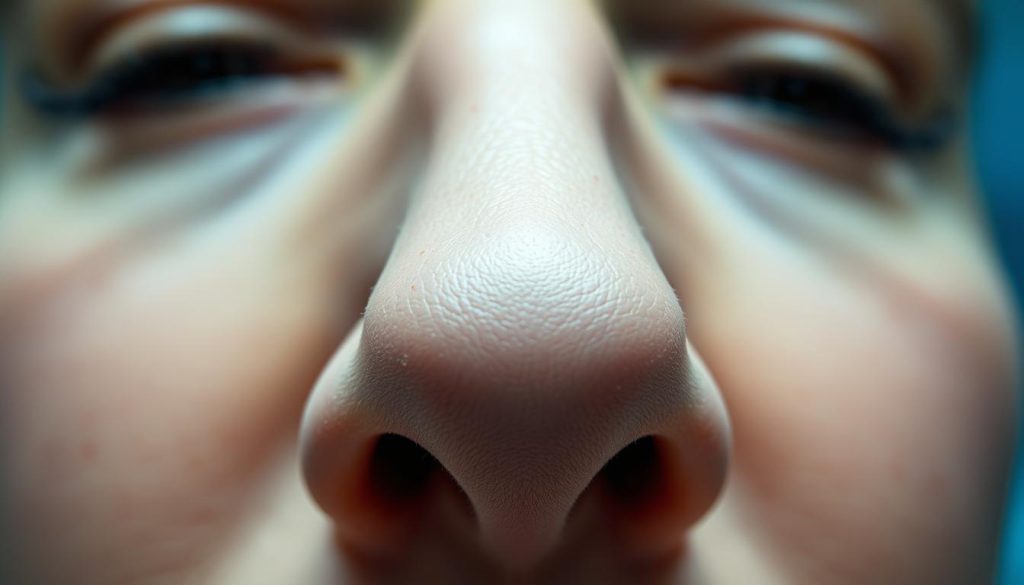
The Day of Surgery: Step-by-Step
As the day of bulbous nose surgery approaches, patients should be aware of the step-by-step process they will undergo to ensure a smooth and successful operation.
Anesthesia Options
The choice of anesthesia for bulbous nose tip surgery is crucial for patient comfort. Options typically include local anesthesia with sedation or general anesthesia, depending on the complexity of the procedure and the patient’s preference.
Surgical Process Timeline
The surgical process for correcting a bulbous nose involves precise techniques. The timeline can vary, but it generally includes preparation, the surgery itself, and initial recovery monitoring, which can take several hours.
Immediate Post-Operative Care
After the surgery, patients are monitored in a recovery area. A nasal splint is applied to protect the nose, and cold compresses may be used to minimize swelling. Detailed post-operative instructions are provided to ensure a smooth recovery process.
| Post-Operative Care | Description | Duration |
|---|---|---|
| Nasal Splint | Applied externally to protect and support the newly shaped nasal structures | Typically 1-2 weeks |
| Cold Compresses | Used intermittently to minimize swelling and bruising | First 24-48 hours |
| Pain Management | Involves prescribed medications, transitioning to over-the-counter pain relievers | First few days to a week |
Recovery After Bulbous Nose Tip Surgery
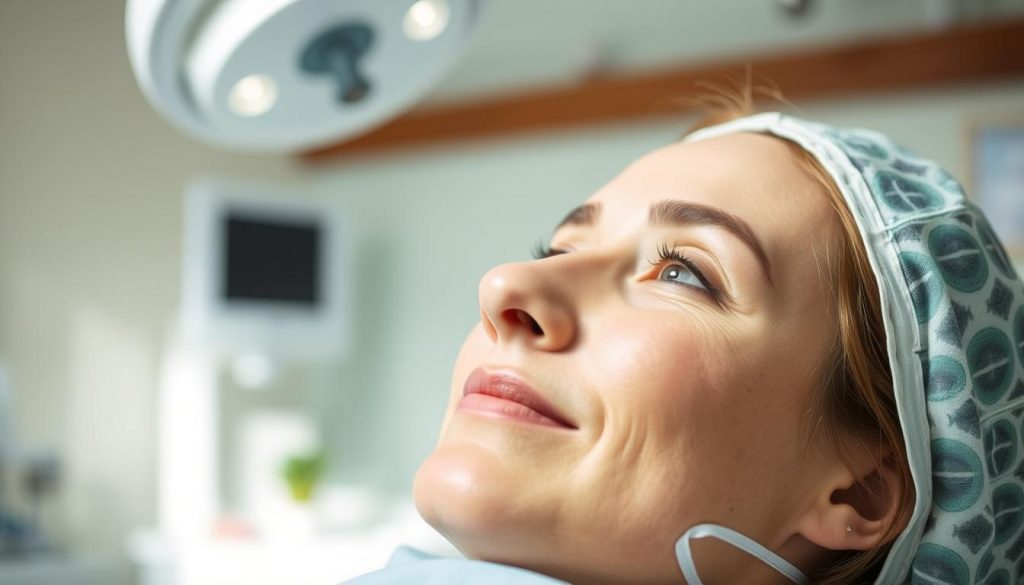
Recovery after bulbous tip rhinoplasty is a gradual process that involves initial healing, returning to normal activities, and long-term refinement. While initial improvements are noticeable once the swelling subsides, the final results of rhinoplasty can take up to a year to fully manifest as the nasal tissues continue to settle and refine.
Week 1-2: Initial Healing Phase
The first two weeks are crucial for initial healing. Patients can expect swelling and bruising, which will gradually subside. It’s essential to follow post-operative instructions carefully to ensure proper healing.
Weeks 3-6: Returning to Normal Activities
As the swelling decreases, patients can start returning to their normal activities. However, it’s crucial to avoid strenuous exercises and activities that could impact the nose. Refinements in the nasal tip continue to emerge during this period.
Long-Term Healing and Final Results
The nasal tip is typically the last area to resolve its swelling completely, with refinements continuing to emerge between 6-12 months after bulbous tip rhinoplasty. Final results become apparent as the skin re-drapes over the newly shaped cartilage framework and scar tissue softens, revealing the true contour of the refined nasal tip.
Key Factors Influencing Final Results:
– The nasal tip refinement continues up to 12 months post-surgery.
– Seasonal changes, hormonal fluctuations, and salt intake may cause temporary swelling.
– Follow-up appointments allow the surgeon to monitor long-term healing.
– Most patients report high satisfaction with their refined nasal tip once final results are achieved.
Potential Risks and Complications
Understanding the potential risks and complications of bulbous nose tip surgery is crucial for patients considering this treatment. While the procedure is generally safe when performed by a skilled and experienced surgeon, there are inherent risks associated with any surgical intervention.
Common Side Effects
Common side effects following bulbous tip rhinoplasty can include swelling, bruising, and discomfort. These are typically temporary and resolve on their own within a few weeks. In some cases, patients may experience nasal congestion or difficulty breathing through the nostrils, but this usually improves as the nasal passages heal.
| Side Effect | Typical Duration |
|---|---|
| Swelling | 2-4 weeks |
| Bruising | 1-3 weeks |
| Nasal Congestion | 1-6 weeks |
When to Contact Your Surgeon
It’s essential for the patient to monitor their recovery and contact their surgeon if they experience any concerning symptoms. These may include:
- Excessive bleeding or signs of infection such as increasing redness, warmth, or purulent discharge.
- Difficulty breathing that worsens over time.
- Unusual or asymmetric swelling.
- Fever above 101.5°F or persistent nausea and vomiting.
- Changes in the color of the nasal tip, which could indicate compromised blood supply.
According to expert opinions, “Proper care and rest are crucial for a smooth recovery after bulbous tip rhinoplasty
‘A successful rhinoplasty is not just about the surgery itself, but also about the post-operative care. Patients should be well-informed and prepared for the recovery process.’
By choosing a skilled surgeon and following post-operative instructions carefully, patients can minimize the risks associated with thetreatment.
Results and Aesthetic Outcomes
The outcome of bulbous tip rhinoplasty is a refined nasal tip that enhances facial aesthetics. This surgical procedure is designed to improve the appearance of the nose tip, providing a more defined and proportional look.
Realistic Expectations
Patients should have realistic expectations when undergoing bulbous tip rhinoplasty. While initial improvements are noticeable once swelling subsides, the final results can take up to a year to fully manifest as nasal tissues settle and refine.
Timeline for Final Results
The evolution of results following bulbous tip rhinoplasty follows a predictable timeline. Approximately 60% of swelling resolves within the first 3-4 weeks, and by 3 months, about 80% of swelling has typically resolved. The table below outlines the timeline for final results.
| Timeframe | Swelling Resolution | Nasal Tip Refinement |
|---|---|---|
| 3-4 weeks | 60% | Initial refinement |
| 3 months | 80% | Noticeable improvement |
| 6-9 months | Continued refinement | Subtle refinements as scar tissue softens |
| 1 year | Final results | Refined nasal tip |
Finding the Right Surgeon for Your Bulbous Tip Rhinoplasty
To achieve optimal results from bulbous tip rhinoplasty, choosing the right plastic surgeon is crucial. Patients should look for a board-certified plastic surgeon with extensive experience in rhinoplasty procedures.
Reviewing before-and-after photos of previous nose job patients and reading reviews can provide valuable insights. During consultations, patients should assess how well the surgeon listens to their concerns and explains the treatment plan.
The surgeon’s understanding of facial harmony and proportion is vital. Verifying the surgeon’s credentials, hospital privileges, and frequency of performing rhinoplasty is also essential.
By carefully selecting a qualified surgeon, patients can achieve their desired nose shape and size while maintaining its natural character. Scheduling a consultation can help determine if the surgeon is the right fit.
FAQ
What is the ideal candidate for a rhinoplasty procedure to correct a bulbous nasal tip?
The ideal candidate is someone who is in good overall health, has a clear understanding of their desired outcome, and has realistic expectations about the results of the procedure. They should also have a nasal tip that is disproportionately large or rounded.
How long does it take to recover from a bulbous tip rhinoplasty?
The initial healing phase typically lasts one to two weeks, during which time patients may experience swelling and bruising. It can take several months for the nasal tissue to fully settle, and up to a year or more for the final results to be apparent.
Will insurance cover the cost of rhinoplasty to correct a bulbous nose?
In most cases, insurance will not cover the cost of rhinoplasty unless it is deemed medically necessary, such as to correct a breathing problem. Patients should check with their insurance provider to determine the extent of their coverage.
Can rhinoplasty be performed on patients with thick sebaceous skin?
Yes, rhinoplasty can be performed on patients with thick sebaceous skin, but it may require specialized techniques to achieve the desired results. A qualified surgeon will be able to assess the patient’s skin and determine the best approach.
How do I choose the right surgeon for my bulbous tip rhinoplasty?
To choose the right surgeon, look for someone who is board-certified and has extensive experience performing rhinoplasty procedures. It’s also essential to review their before-and-after photos, read patient reviews, and schedule a consultation to discuss your goals and expectations.
What are the potential risks and complications associated with rhinoplasty?
As with any surgical procedure, there are potential risks and complications, including infection, bleeding, and adverse reactions to anesthesia. A qualified surgeon will discuss these risks with you during your consultation and take steps to minimize them.
